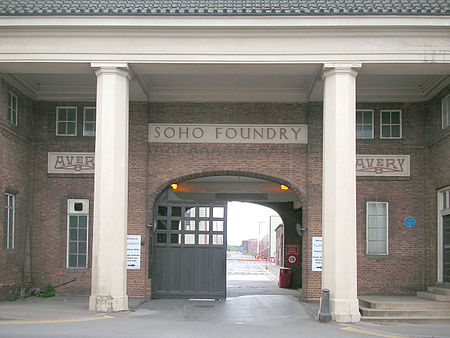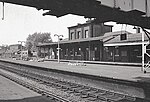Soho Foundry

Soho Foundry is a factory created in 1775 by Matthew Boulton and James Watt and their sons Matthew Robinson Boulton and James Watt Jr. at Smethwick, West Midlands, England (grid reference SP037885), for the manufacture of steam engines. Now owned by Avery Weigh-Tronix, it is used for the manufacture of weighing machines. The early history of the Soho Foundry is of pivotal importance both to the history of the industrial revolution and to the study of the development of management theory. The Soho Foundry stood out from other factories of the day in the sophistication of its planning, its production processes and its management techniques; practising concepts that would not become commonplace until a century later. Comparing its workings to the techniques of mass production and scientific management made famous by Henry Ford and Frederick Winslow Taylor in the United States in the early 20th century, the economist Eric Roll wrote "Neither Taylor, Ford nor any other modern experts devised anything in the way of plan that cannot be discovered at Soho before 1805".
Excerpt from the Wikipedia article Soho Foundry (License: CC BY-SA 3.0, Authors, Images).Soho Foundry
Foundry Lane, Sandwell
Geographical coordinates (GPS) Address Nearby Places Show on map
Geographical coordinates (GPS)
| Latitude | Longitude |
|---|---|
| N 52.4972 ° | E -1.9475 ° |
Address
Soho Foundry Tavern
Foundry Lane 154
B66 2LL Sandwell
England, United Kingdom
Open on Google Maps









